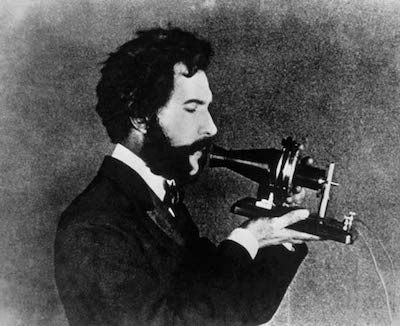
December 07, 2016
This is the first of a series of posts where we follow the life of the telephone call. Over the course of the series we'll cover the history of telephony, challenges to PBX, infrastructure, and telephony design decisions.
John Rector is a Dialpad co-founder and VP of Telephony and Mobile. Previously, John worked at Google as a Senior Software Engineer, building the telephony backend for Google Voice.
Today we look at telephones and networks from 1800 to the 1960s.
Invention of the telephone

Bell utters the famous words “Mr. Watson, come here. I want to see you” in March of 1876. The telephone was also developed independently by Antonio Meucci of Italy. Much historical controversy exists then and now over who deserves more credit. However, Bell was the first to patent, widely disseminate, and develop telephone technology in the United States.
Mesh networking

Bell's telephone was a point-to-point communicator. Think of it like a “tin can telephone”. This works fine for networks with only two or three users. But as the number of users grows, it quickly turns into a mesh network with way too many wires to build and maintain.

The answer is a central exchange. Everyone connects with one line to the exchange. When you want to talk to someone on the network you call the exchange, and the operator connects you with the right person.

Exchange at the center of the network
The first exchanges were manually operated. You lifted the receiver off a hook, and the operator asked you "Number, please". If the number was local, the operator connected you immediately. If the number was on another exchange (in a different region, or city) the operator put you on a trunk line to connect to that city's exchange. The operator there asked "Number please" and completed your call.

As the number of users grew and technology advanced, the switching technology changed as well. Early telephone numbers consisted of two letters and four numbers. The first two letters referred to the name of the local exchange (also called the central office). For example, TO-1234 referred to the "Townsend" exchange or "DU" for Dunkirk.

It was around the 1950s that letters were first mapped to digits in a way similar to what we see on today's dial pads (2 = ABC, 3 = DEF, etc). This coincided with the development of the rotary dial phone and the mechanical switch which eliminated the need for human operators.

That ends the first part of our series. In Part 2, we'll dive into the PSTN and Modern Telephony.





